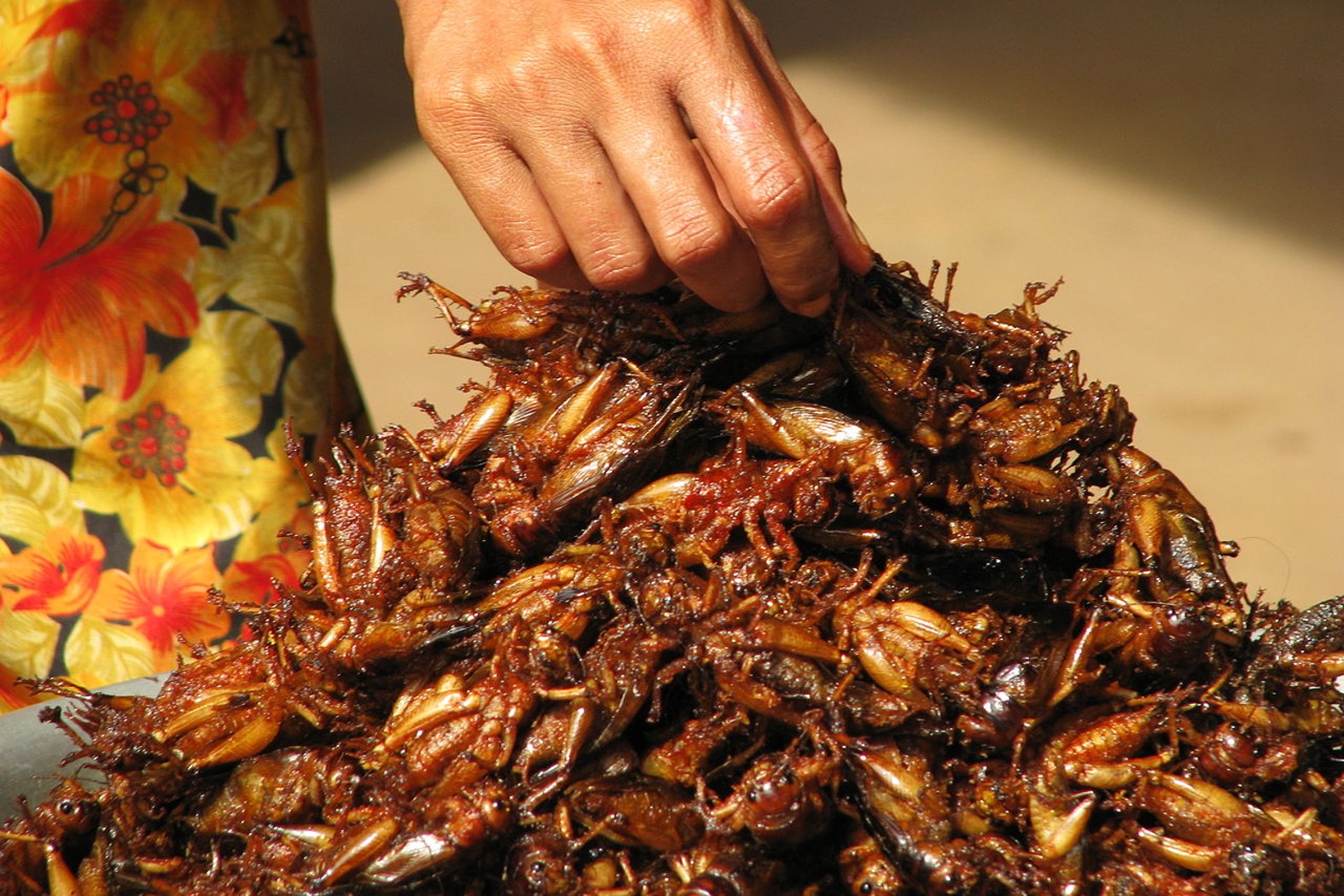Cultured insect cells: making insects palatable

By 2050, the world population is expected to exceed nine billion, putting future global food security at risk. Animal-based food production contributes significantly to climate change. Although plant-based foods have a much lower environmental footprint than their counterparts, they do not satisfy everyone’s tastes or nutritional requirements. In this instance, switching towards an insect-based diet might just be the sustainable option we need to address food insecurities while also being greener on the planet.
The idea of eating insects, or entomophagy, is not new. For thousands of years, insects have formed a part of traditional diets for people across Asia, South America and Africa. Not only are insects viewed as food to alleviate hunger and improve malnutrition, but they are also often used as traditional medicines. According to proponents, they’re tasty and can even provide meat-like flavours!
Edible insects have traditionally been collected in the wild, although some insect species (honey bees, silkworms, etc.) already have a long history of domestication for research/field applications or the economic value of their products. However, just as the farming of livestock transformed food production, insect farming is rapidly becoming more prevalent in the agricultural sector.
Indeed, insects as mini-livestock have proven to be a more sustainable option for food production compared to traditional livestock. They boast higher reproductive capacity, nutritional qualities and feed-conversion efficiency. Not only do they require less land for farming, but they can also thrive on bio-waste. Thus, edible insect farming could reduce the number of resources and emissions needed to produce food, as well as free up land for nature to help reduce global greenhouse gas emissions.
Regardless of the numerous advantages of using insects as a food source, there remains a high degree of public aversion to entomophagy, particularly in Western countries. Cultural biases of seeing insects as harmful or unsanitary, as well as religious restrictions (Judaism), contribute to the negative perception of eating insects.
Efforts are being made by the UN, EU and other governmental bodies to normalize the consumption of edible insects. Various food manufacturers have also been championing research on developing palatable processing methods to have the insects taste (at least) as good as what they are meant to replace.
However, due to innate taste and texture differences, foods from whole insects still could not fully satisfy animal-based food cravings. This highlights the need to accelerate the development of other sustainable food production methods with the potential for transformative impact.
Cellular agriculture involves the production of agricultural commodities (meat, eggs, dairy, leather, etc.) via cells, as opposed to whole animals. Broadly speaking, the process of cellular agriculture usually involves: (1) cell sourcing, (2) proliferation in bioreactors, (3) adhering the cells to scaffold systems, (4) cell differentiation and (5) product assembly.
Companies like TurtleTree Labs and Mosa Meat have already made significant strides in the industry by pioneering the production of milk and beef burgers, respectively, from cell cultures. Over the years, different cultured meat products using cells from various species—primarily bovine, porcine and avian—have also emerged. Eat Just's commercial availability of cultured chicken nuggets in 2020 also marked a major milestone for the industry of cellular meat agriculture.
Developers of cultured meat are optimistic that their products will revolutionise the food industry. However, the technology is still in its early stages and must overcome numerous challenges to achieve this goal. Scalability and cost due to the need for advanced bioreactor systems, costly growth media, energy/water, other resources and a skilled labour force are among the most pressing issues. Additionally, a recent study concluded that while resource and land inputs could be less for cultured meat than for conventional meat, the higher energy/water requirement and the uncertainty of emission levels of cultured meat make it potentially more environmentally damaging than conventional livestock production.
Researchers are also looking at cells obtained from insects to overcome the ongoing technical restraints of cellular meat advancement and scale-up. Remove the legs and the other crunchy bits, and form the cells into materials with meat-like texture and the yuck factor might go away. Insect cells have several advantages over mammalian and avian cells in terms of their resource requirements and resilience to changes in environmental conditions.
A key advantage of insects over mammalian cells is the temperature at which they are grown. Insect cell growth is optimal at 27°C, compared with 37°C for mammalian cells. In addition, insect cells do not require the expensive cocktail of growth factors which need to be added for mammalian cell culture. Additional benefits include ease of immortalisation/transfection, high-density proliferation, adaptability to serum-free media, nutrient density and relevance to seafood organisms.
Current research in lab-grown insect meat is, at present, strictly academic and further innovation is still necessary for the concept could be commercially feasible. Advances in 3D culture and scaffolding materials are necessary to allow for the incorporation of insect cells into large, complex tissues and to mimic the textures and nutrient bioavailability of conventional food products. Effective controls of high-density insect cell differentiation and better bioreactor system design are also required. Cultured insect cell development is not confined to locusts and other insect species that are commonly eaten. The search for an insect cell that can produce a product capable of appealing to picky consumers may well extend in one of the lesser-known insect species.
With the increasing popularity of entomophagy and the expected growth of the edible insect market, insect-based cellular agriculture has the potential to play a larger role in the food industry in the years to come without requiring significant changes in consumer behaviour.
Image Credit: McKay Savage



